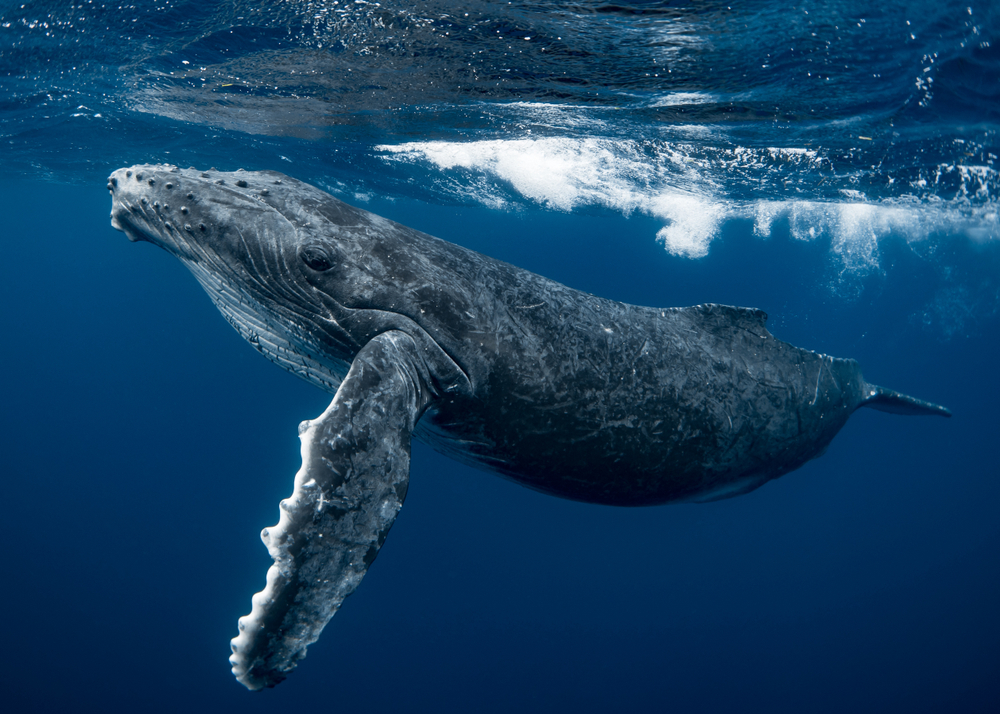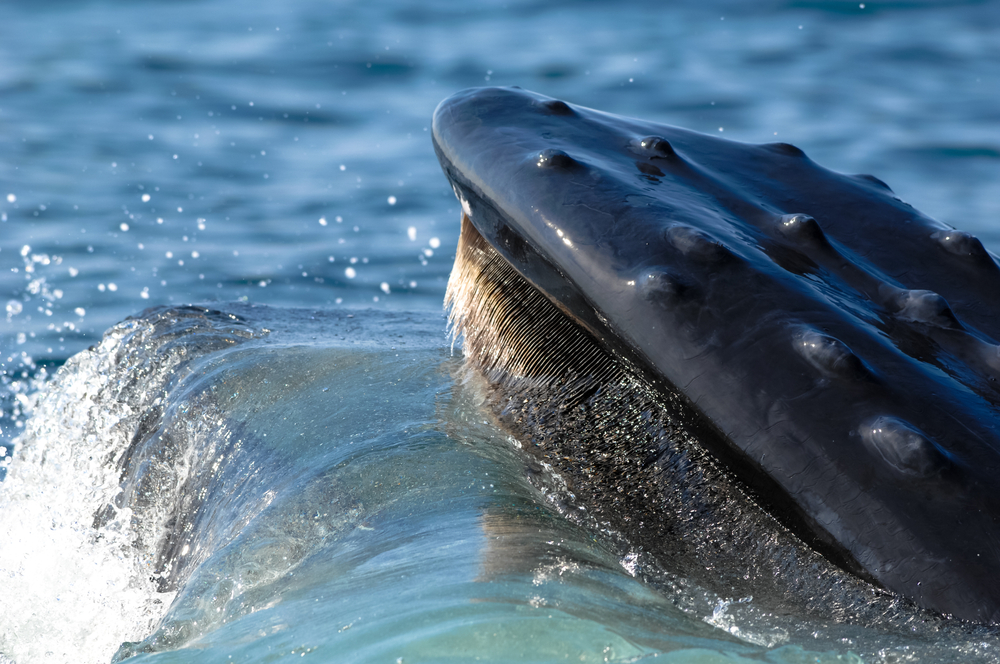| Common name | Humpback whale |
| Scientific name | Megaptera novaeangliae |
| Type | Mammal |
| Diet | Omnivore |
| Average lifespan | 45-50 years |
| Size | 13-16 metres |
With a physical presence that can’t be ignored, the original gentle giant of the ocean, the humpback whale, is also well known as a master of music.
Famous for its low, beautifully haunting songs that echo through the sea, the humpback is found in waters worldwide and migrates annually off the west and east coasts of Australia.
Easily recognised thanks to their long flippers that are almost one third the size of their entire body, this large baleen whale is grey to black in colour and has a distinct hump under the dorsal fin and knobbly protuberances on the head. White markings on the belly are individually patterned and act like a fingerprint, making each whale distinguishable by scientists and researchers.

Even though humpback whales are found in all major oceans from sub-polar latitudes to the equator, there are four recognised populations of whales which don’t overlap or interact with one another. They are the North Pacific, the Atlantic, Southern Oceans, and the Indian Ocean groups.
All humpbacks gulp mouthfuls of microscopic plankton, tiny crustaceans, and other small schooling fish, using their baleen plates to filter the seawater from their prey. With their tremendous size, an adult humpback can eat up to 1360kg of food per day.
Living mostly in the open ocean, humpback whales migrate from colder summer waters where they feed, to warmer winter waters to breed and give birth. During this annual migration, whales tend to hover closer to the coast and have become a favourite with whale watchers, thanks to their entertaining behavioural displays. Humpbacks use their large tail fins, or flukes, as well as pectoral fins to slap and make impressive splashes in the ocean. They can also propel themselves nose-first out of the water, do peduncle throws, where they expose their entire rear torso and tail out of the water, twist, and then slam their lower half down onto the water’s surface.

The song of the humpback is louder than most other whales, with adult males taking on the role of singer. With tunes lasting around 20 minutes and then being repeated, when the humpback projects these haunting melodies, it floats relatively motionless, with its head down. It is thought that these tunes are a way of humpbacks communicating with other whales and potentially attracting a mate. Humpback calves are also able to whisper to their mothers.
Seasoned long distance travellers, the humpback makes some of the longest migrations of any whale, traveling thousands of kilometres in search of food and then the perfect warm water to breed and raise their calves. One calf is born after a gestation of 12 months and this baby humpback will stay with its mother, nursing for a year. Calves swim close by to their mothers, often touching flippers in a gesture of affection and will continue to grow for ten years.








